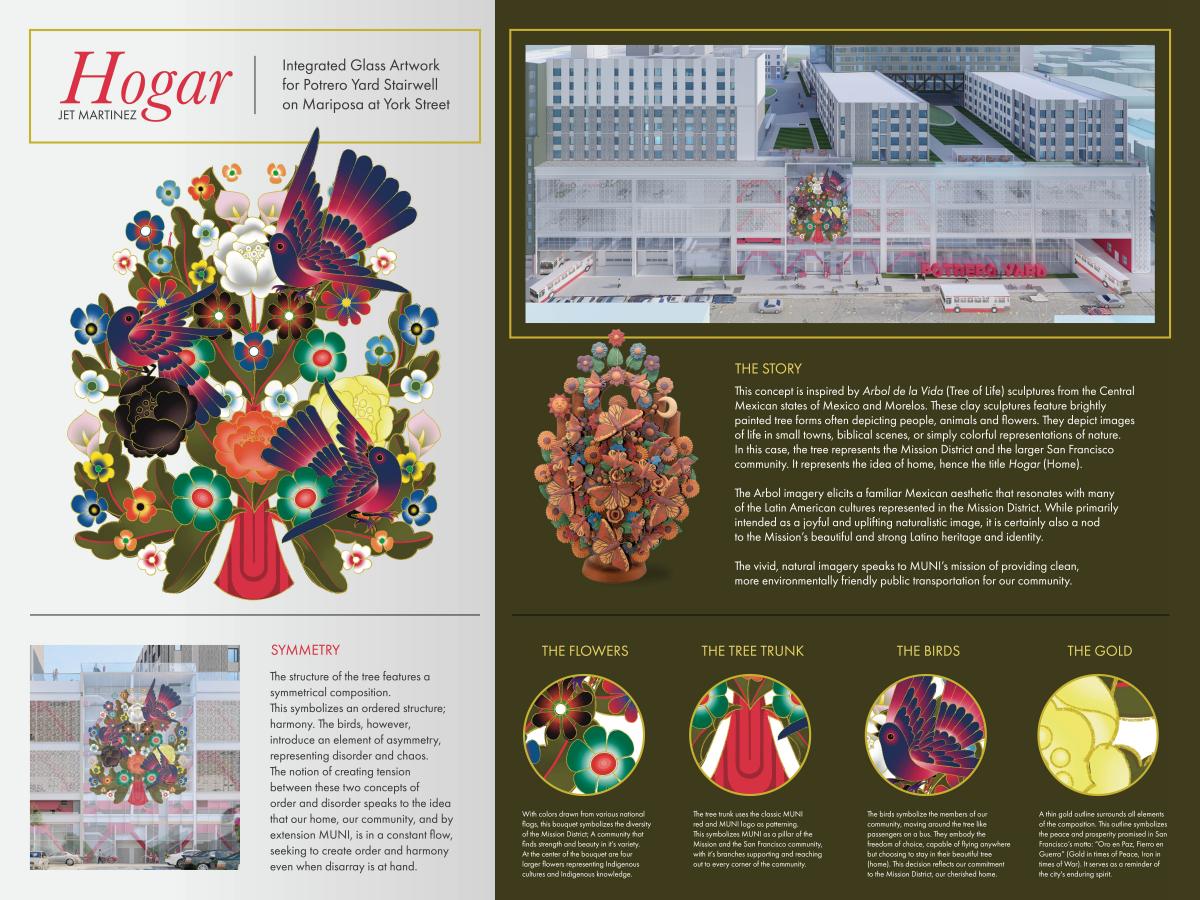
Hogar is inspired by “Arbol de la Vida” (Tree of Life) sculptures from the Central Mexican states of Mexico and Morelos. These clay sculptures often feature brightly painted tree forms often depicting people, animals and flowers. They can depict images of life in small towns, or Biblical scenes, or simply colorful representations of Nature.
In this case, the Tree represents the Mission District and the larger San Francisco community. The Tree also represents the idea of Home, hence the title Hogar. The Arbol imagery elicits a familiar Mexican aesthetic that resonates with many other Latin American cultures represented in the Mission District. While primarily intended as a joyful and uplifting naturalistic image, it is certainly also a nod to the Mission’s beautiful and strong Latino heritage and identity. Additionally, the vivid natural imagery speaks to Muni’s mission of providing clean, more environmentally friendly public transportation for our community.
Martinez’s conceptual design features several distinct elements. The tree/tree trunk uses the classic Muni red and Muni logo as patterning and symbolizes Muni as a pillar of the Mission and the San Francisco community, with its branches supporting and reaching out to every corner of the community. The flowers represent the multitude of cultures that make up the Mission District and the larger San Francisco community. Using color combinations drawn from national flags of many countries, the flowers are meant to be a varied and colorful bouquet. This bouquet symbolizes the Mission District; A community that finds strength and beauty in its diversity. At the center of the bouquet, are four larger flowers representing Indigenous cultures and Indigenous knowledge. Finally, the birds represent us, the members of the community. The birds move around the tree like passengers on the bus. The birds also represent choice. The birds could go anywhere, but in this case they stay home, in their beautiful little tree. The birds represent the choice to remain in the Mission District.
The final touch, as envisioned by the Artist, is a thin gold outline around all the elements of the composition. This outline symbolizes the peace and prosperity promised in San Francisco’s motto: “Oro en Paz, Fierro en Guerra (Gold in times of Peace, Iron in times of War)”.
The structure of the tree design features a symmetrical composition. This symbolizes an ordered structure—harmony. The birds, however, introduce an element of asymmetry, representing disorder and chaos. The notion of creating a tension between these two concepts of order and disorder speaks to the idea that our home, our community and by extension Muni, is in a constant flow, seeking to create order and harmony even when disarray is at hand.
View a larger image of Hogar
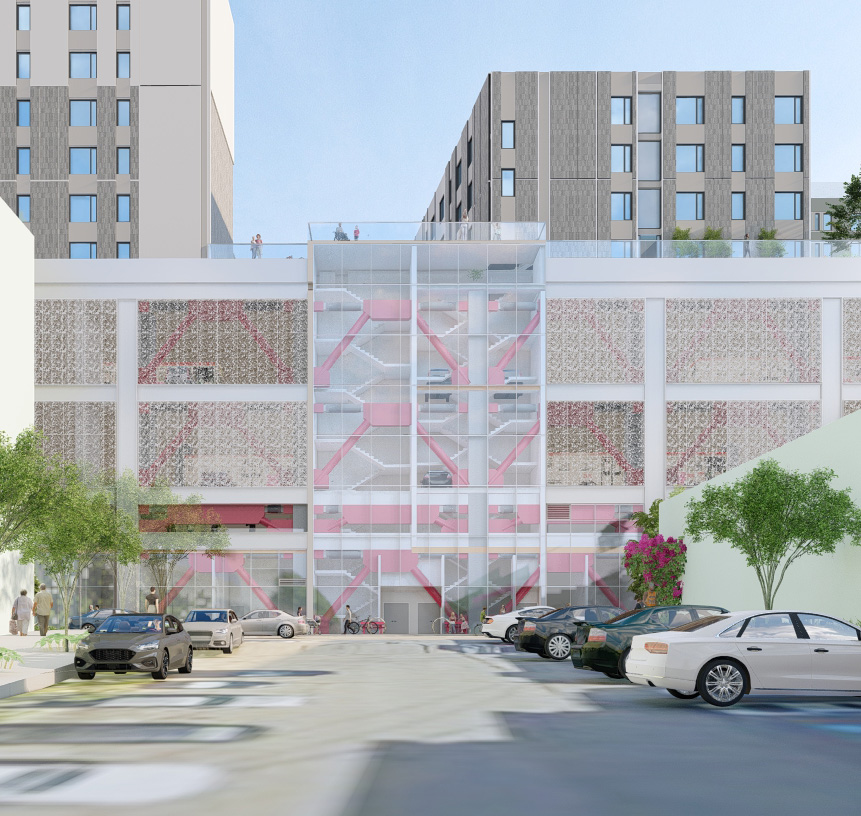
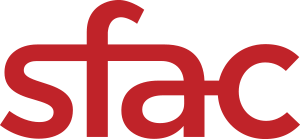
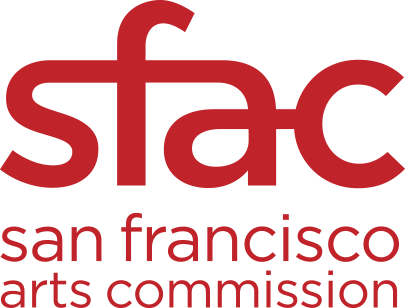

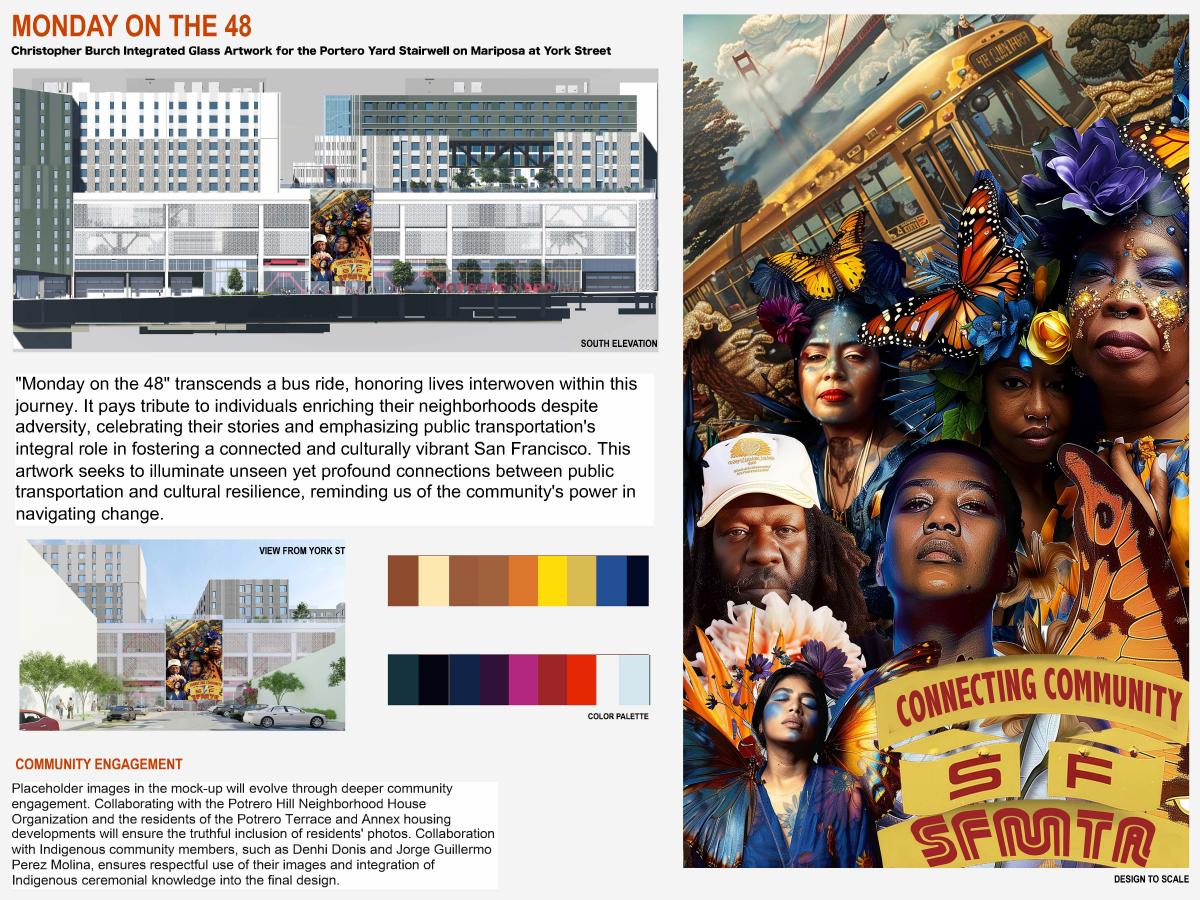

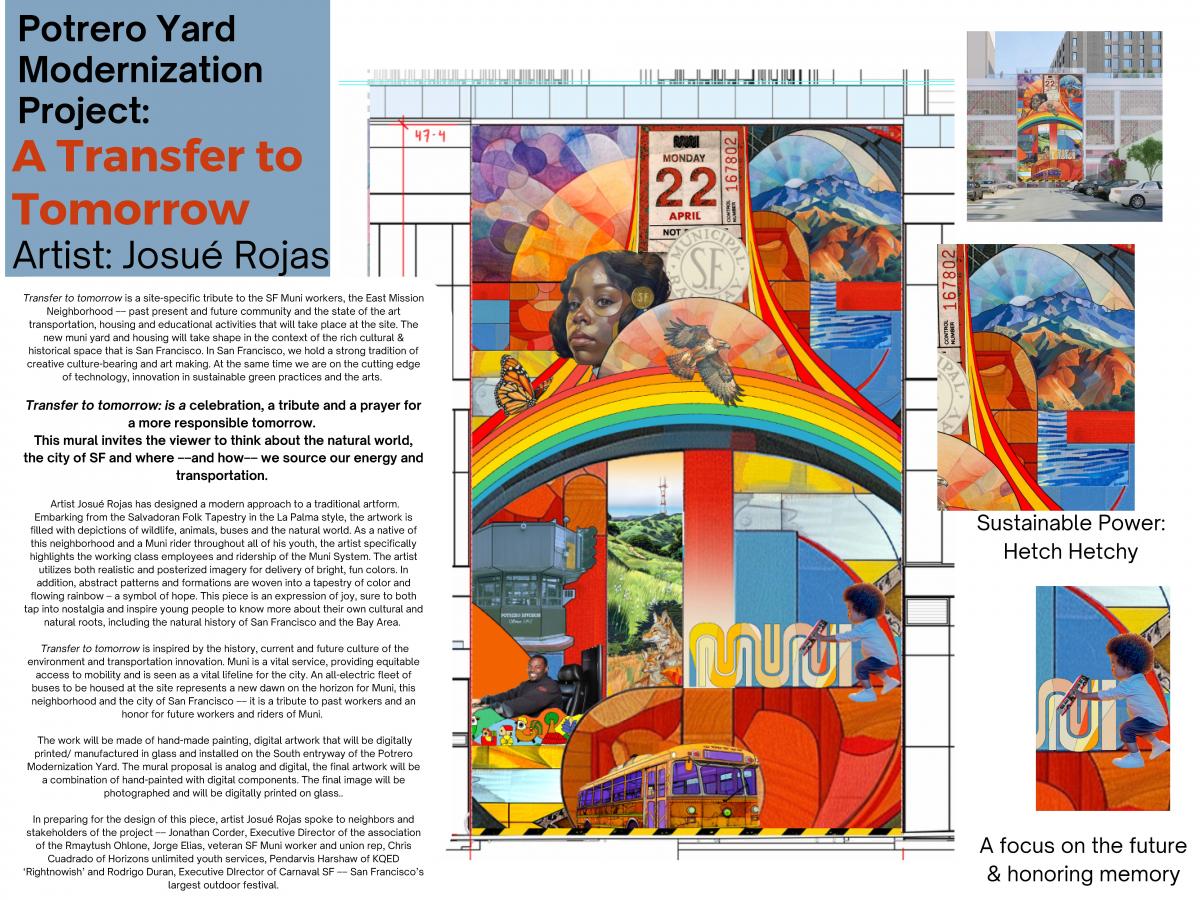
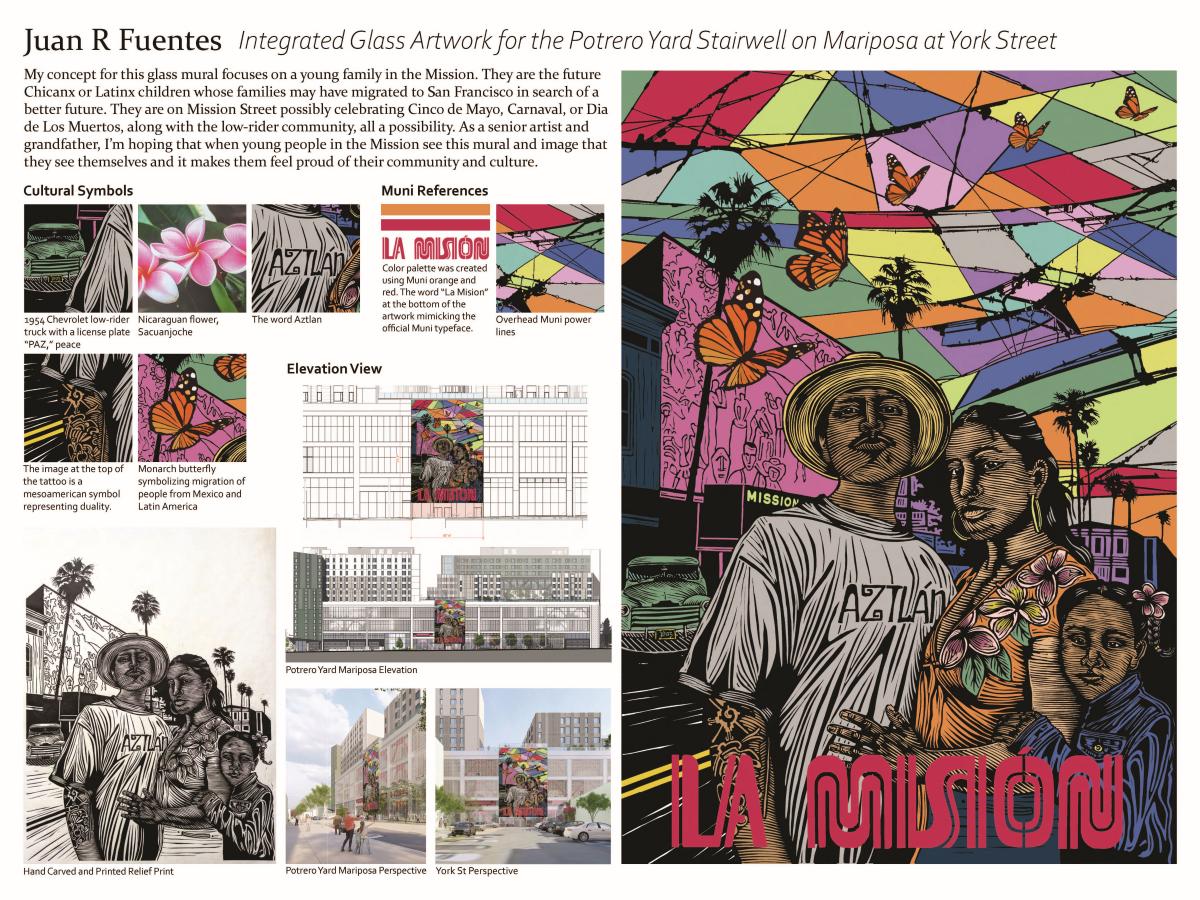 Juan R. Fuentes’s conceptual artwork design represents the diversity of a young family in the Mission community. They are the future Chicanx or Latinx children whose families may have migrated to San Francisco in search of a better future. Included at the bottom of the design is the word “La Misión” mimicking the MUNI logo and Mission community.
Juan R. Fuentes’s conceptual artwork design represents the diversity of a young family in the Mission community. They are the future Chicanx or Latinx children whose families may have migrated to San Francisco in search of a better future. Included at the bottom of the design is the word “La Misión” mimicking the MUNI logo and Mission community.
Opportunity For Public Comment
Please take a few minutes to review these artwork proposals and provide feedback. The proposals are available online at www.sfartscommission.org/calendar/proposal-displays, or accessed by the QR Code below, where you can leave feedback in the public comment form. Comments may also be submitted via email to sfacpublicartcomment@sfgov.org by Monday, August 19, 2024 at 5:00 p.m. PST.
Public comments will be considered by the Review Panel as part of the Final Review Panel meeting where the Panel will recommend one proposal for implementation. Please note that public comments do not constitute a vote.
The Final Review Panel meeting will take place remotely during the first week of September 2024. All Artist Review Panel meetings are open to the public. An agenda for the meeting will be posted 72 hours in advance of the meeting on SFAC’s website under the Public Meeting section: www.sfartscommission.org